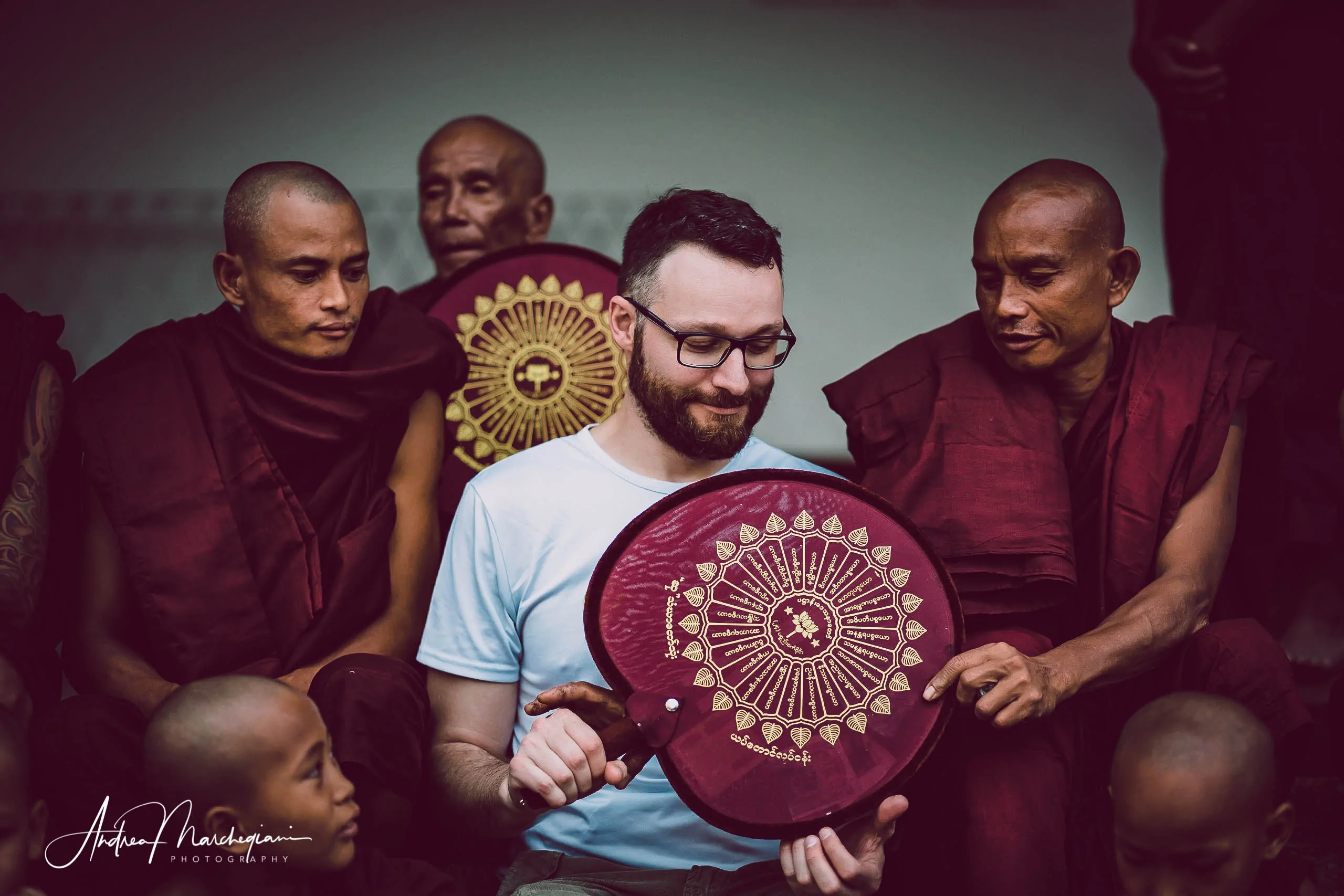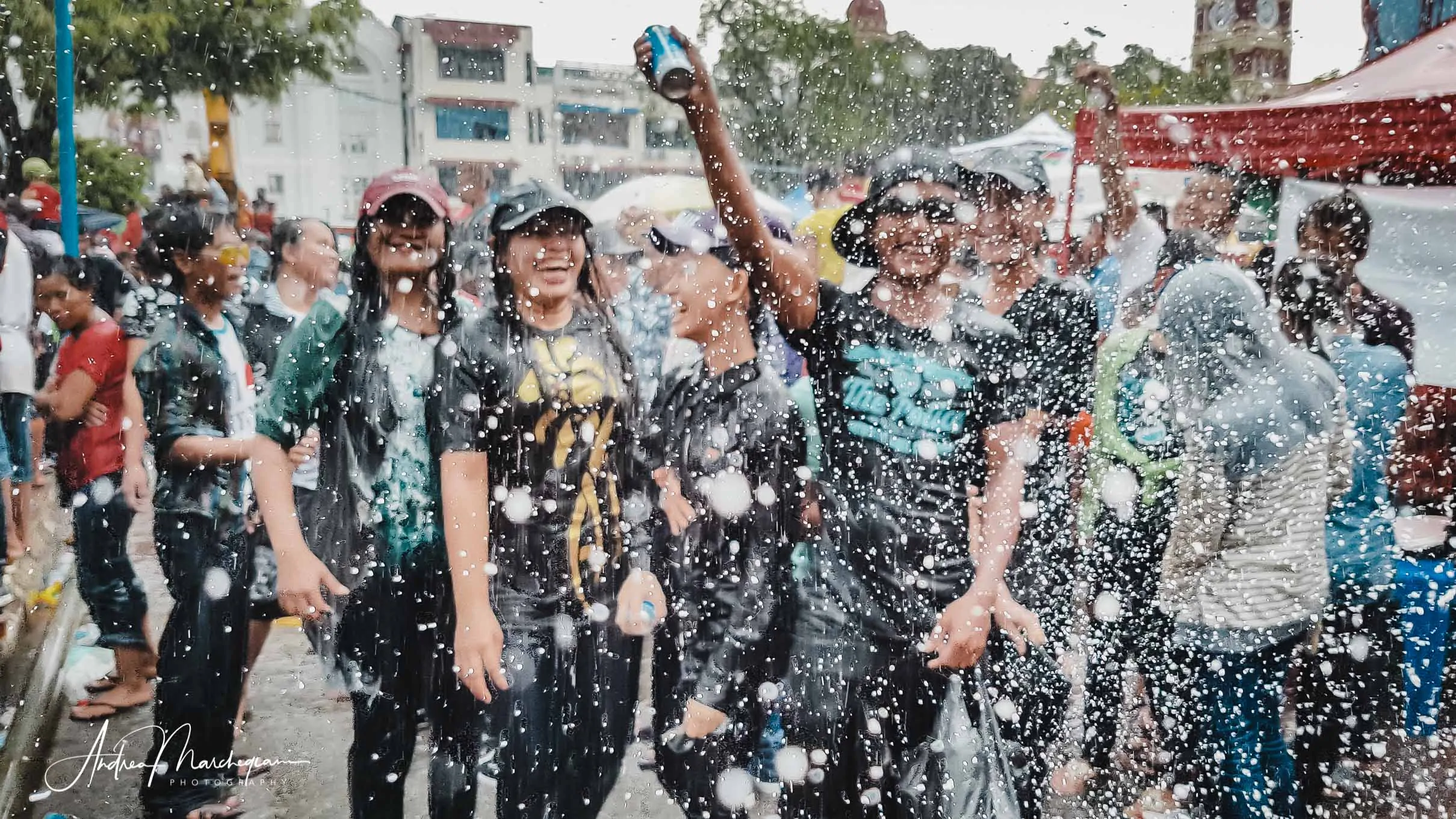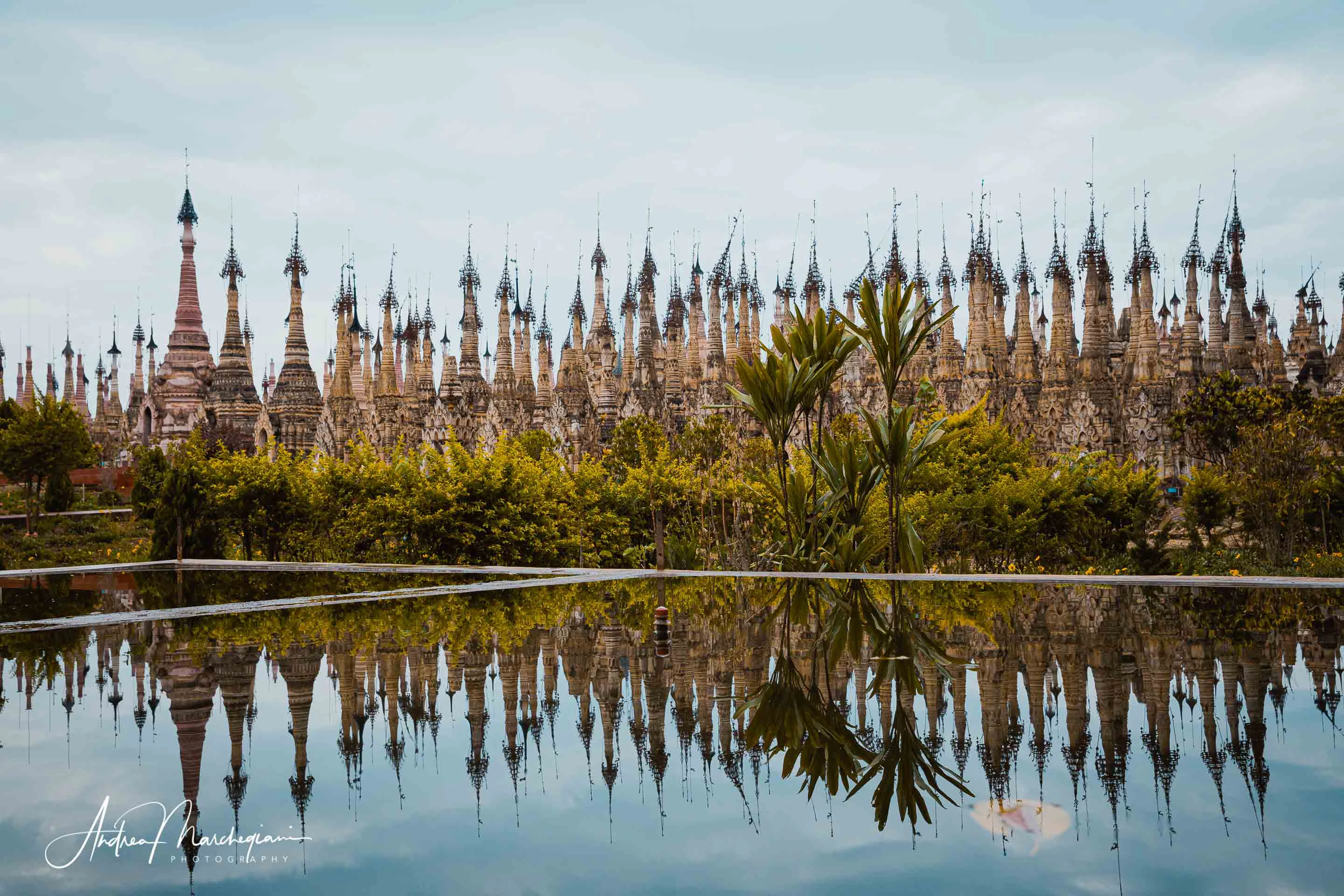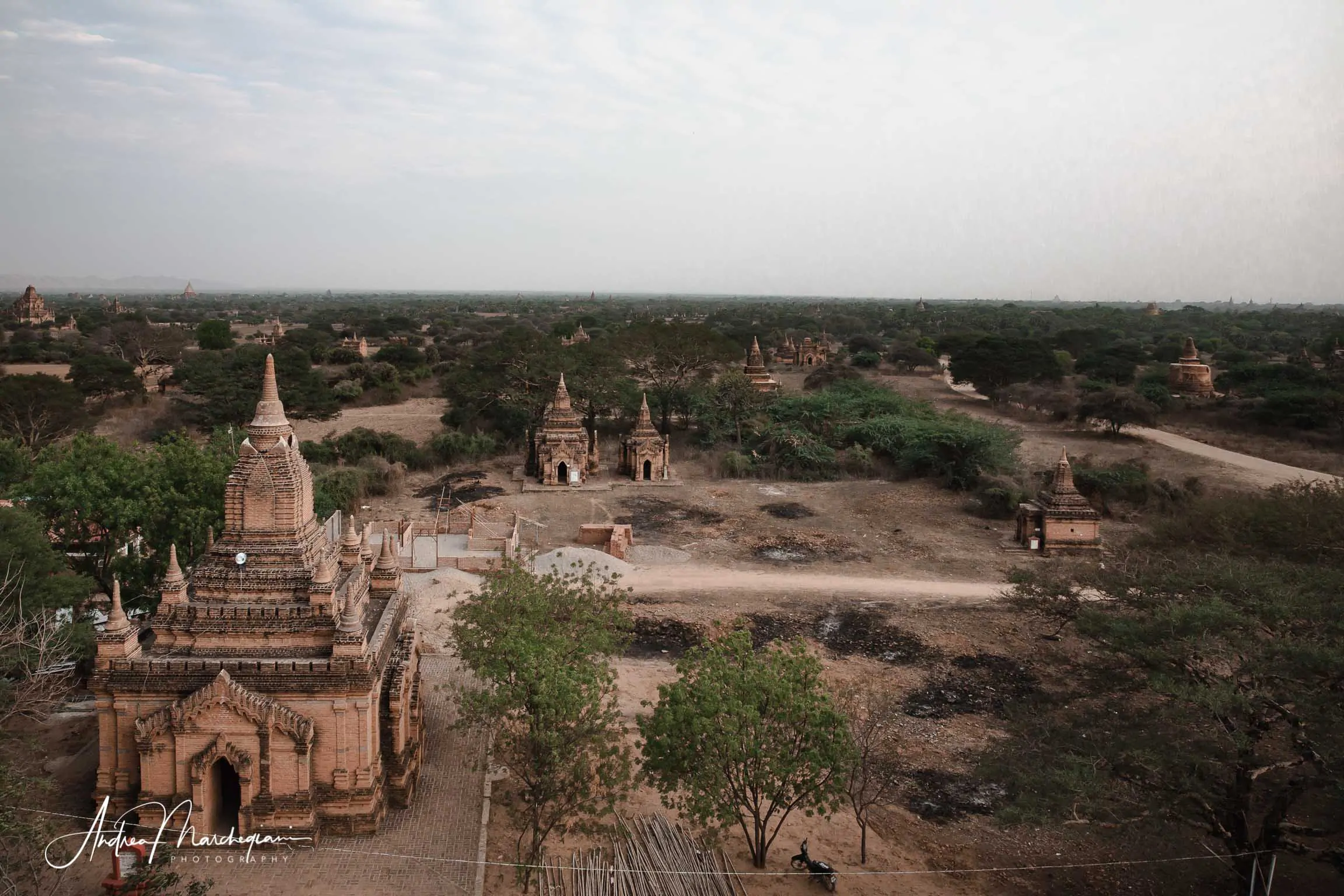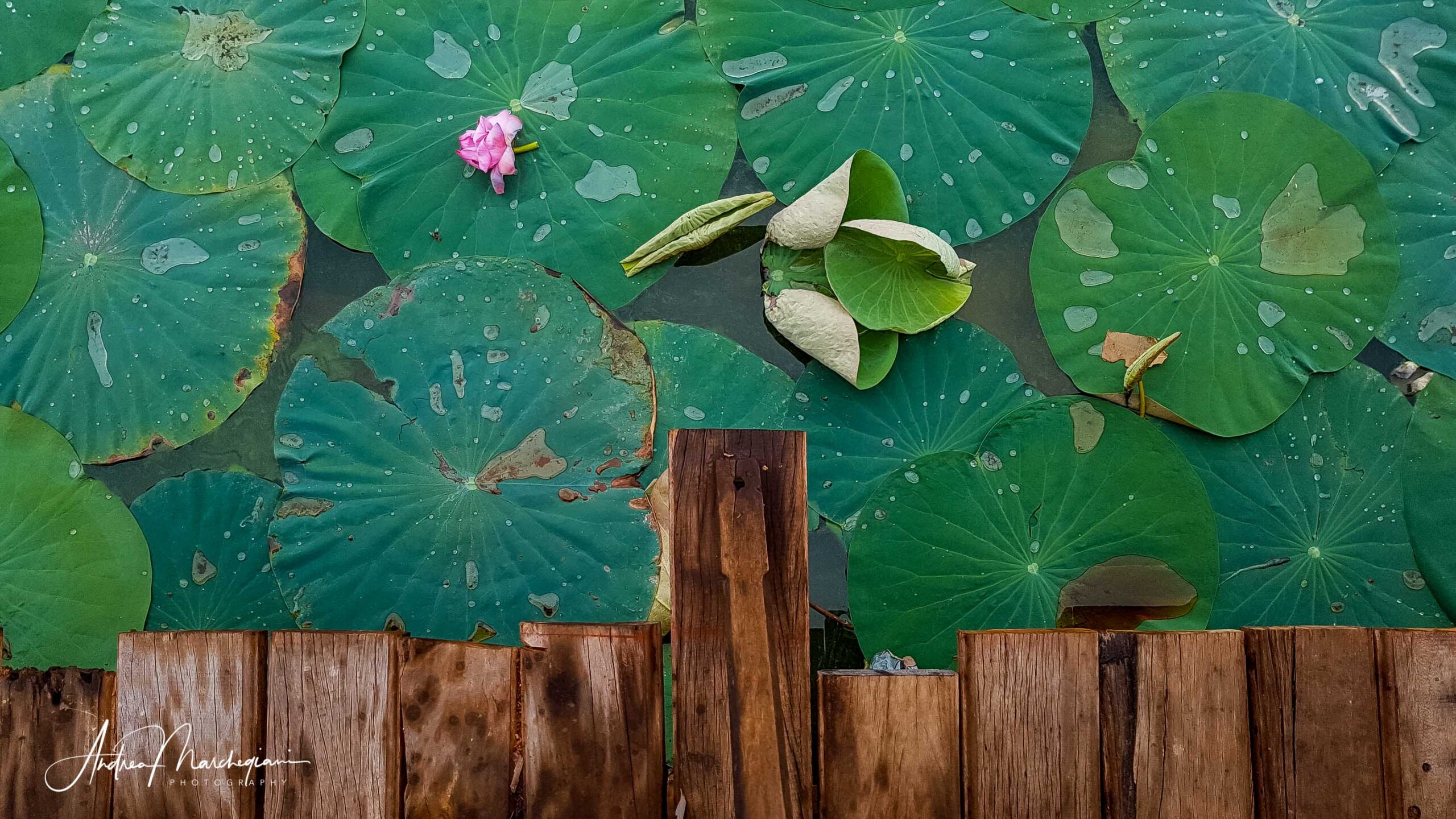
- Home
- Photo Galleries
- Portrait Photography
- Landscape Photography
- Street Photography
- China
- Ethiopia
- India
- Holy Ganges
- Varanasi
- Varanasi Ganga Aarti
- Varanasi, Manikarnika Ghat
- Varanasi Streets & Alleys
- Varanasi Demolition
- Varanasi Fruit Market
- Sarnath
- Brick Kilns
- Tamil Nadu, Chennai & Mamallapuram
- Tamil Nadu, Fort Tirumayam & Madurai
- Tamil Nadu, Tiruvannamalai & Thanjavur
- Kerala, Munnar
- Kerala, Peryiar
- Kerala, Backwaters
- Kerala, Kochi
- Kazakhstan
- Myanmar
- Senegal
- Uzbekistan
- Travel Blog
- China
- Ethiopia
- India
- Tamil Nadu & Kerala
- Varanasi
- Whato to do in Varanasi
- Varanasi Life along the Ghats
- Varanasi Death along the Ghats
- Varanasi Ganga Aarti Ceremony
- Varanasi demolished to honor Shiva
- Varanasi Fruit Market
- “Varanasi, A Journey into the Infinite”
- Sarnath
- All about River Ganges
- Holy Shit. All about Indian Cow Dung
- Clean India Project
- Brick factories
- Tilaka, pundra, bindi: what is the mark on Indian foreheads?
- Kazakhstan
- Mongolia
- Ulaanbaatar, the coldest capital in the world
- What to do in Ulaanbaatar
- Chinggis Khan Museum, 6 floors of Mongolian history
- Gorkhi-Terelj National Park and Bodgkhan Natural Reserve
- Altai Mountains, Things to do in Olgii and Sagsai
- Living with the Eagle Hunters
- Sagsai Eagle Festival
- Navrus Festival
- Xöömej, Mongolian throat singing
- Mongolian Food
- Myanmar
- Senegal
- Uzbekistan
- Latest Posts
- Photography Blog
- About
- Prints
“The beauty and importance of the Rangoon Pagoda is so great that it goes well beyond the superficial spectacles our journey condemns us to. It can stay next to Castel Sant’Angelo, the Acropolis, the Pyramids.”
– Jean Cocteau
Share with your friends:
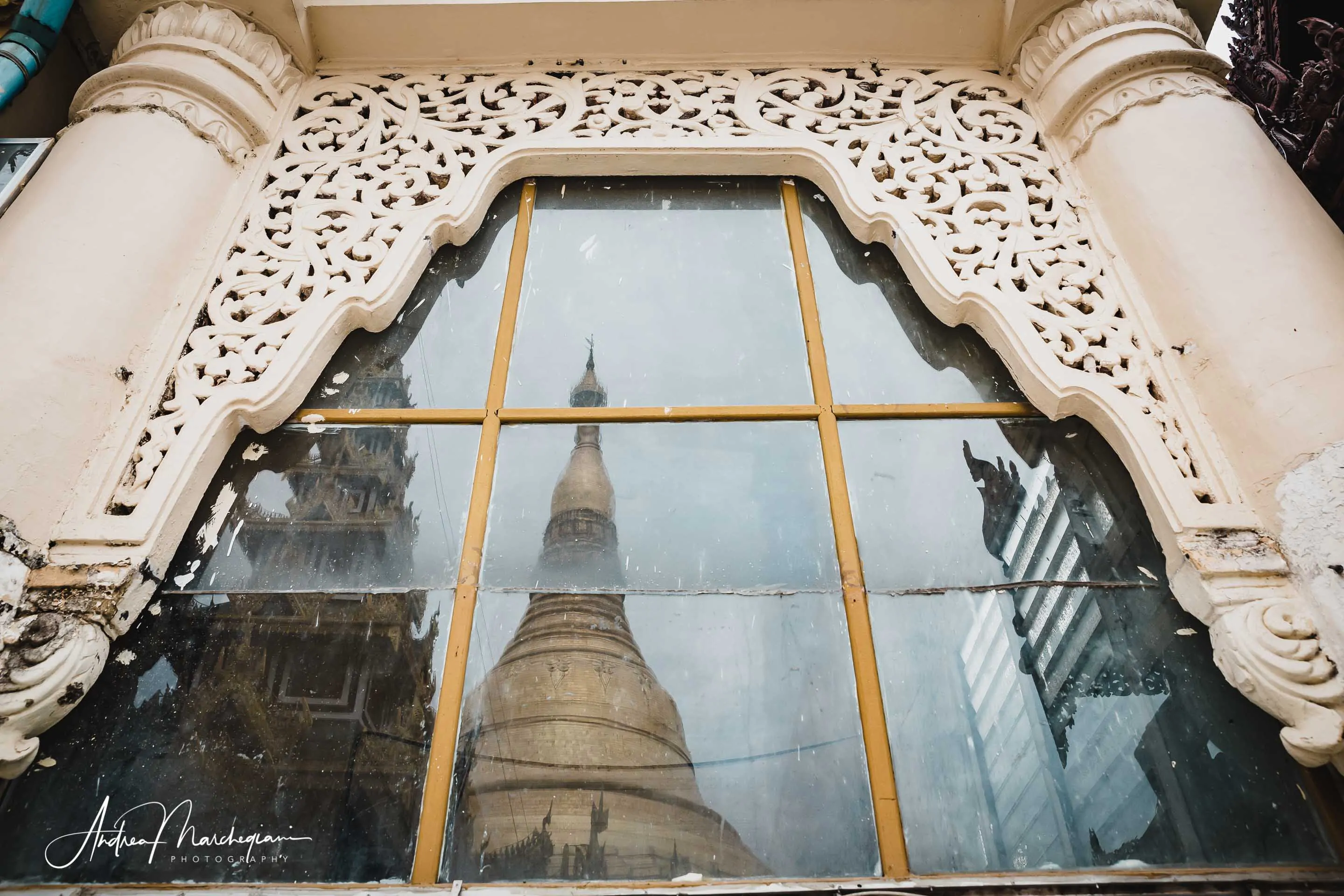
Yangon, the most populous city in Myanmar
Yangon (or Rangoon) was the capital of Myanmar from 1885, when the British conquered the country and preferred it to Mandalay, up to 2006, when the military government replaced it with Naypyidaw, a city specially built for this purpose in the north of the country.
However, with its 7 million inhabitants, Yangon remains the most populous city in Myanmar and the largest commercial hub in the country. In the late 1980s and early 1990s, the colonial-style old town was cleared of squatters and carefully restored. Today many of the old colonial buildings house offices, business premises and apartments. The streets were cleared and the avenues tree-lined; in 1995, the government banned the consumption of betel, a leaf that people love to chew but often spit on the ground, staining the city streets with red spots.
The great care given to Yangon, which rises on the homonymous river, is mainly due to the presence of the large Buddhist pagoda of the Shwedagon Paya, the most famous and beloved by the Burmese people.
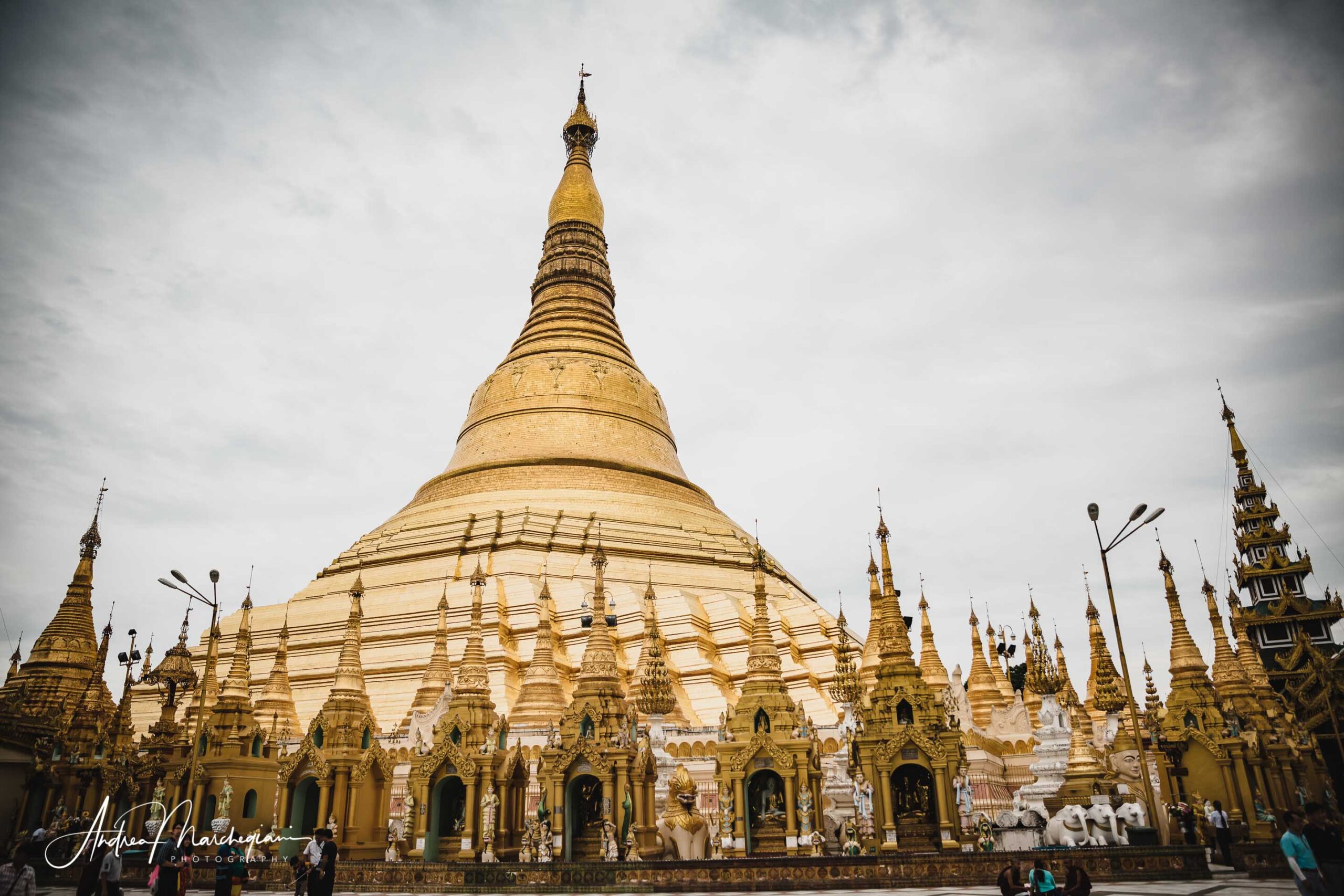
Schwedagon Paya
If there is one place that represents the essence of Myanmar is undoubtedly the Shwedagon Paya, with its 98 meter high golden stupa that completely dominates the Yangon skyline.
All Burmese consider it the most sacred place in the country and hope to visit it at least once in their lives so they can walk around it and meditate at its feet, be dazzled by its bright yellow color at noon and wait for it to turn pale orange at sunset.
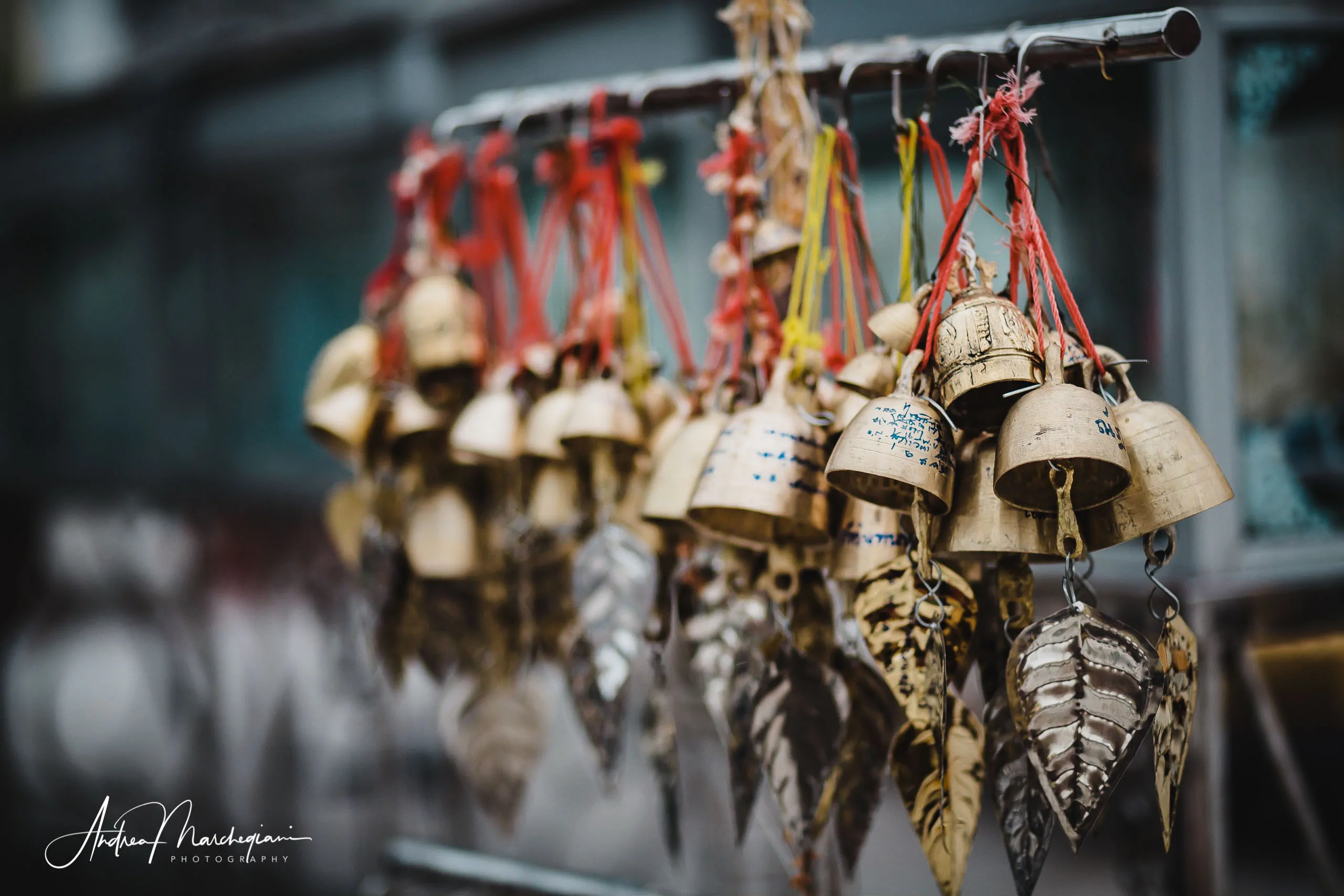
Although archaeologists date from the 6th to the 10th century, legend has it that the stupa is 2500 years old and hides eight Buddha hairs.
Some say the hill the pagoda is erected on housed other relics of other Buddhas, making it a highly energetic place. Once, after the hair was accidentally exposed to the sun, the earth was supposedly shaken by earthquakes, the blind could see again, the mute could speak, precious gems rained and all the trees bloomed out of season.
Then the stupa fell into disuse and only many centuries later, during the Bagan period, the Burmese kings rediscovered it.
Because of the earthquakes it was subjected to, the stupa ( it is actually a zedi, because the structure is full inside) has been rebuilt many times and its current appearance dates back to 1769.

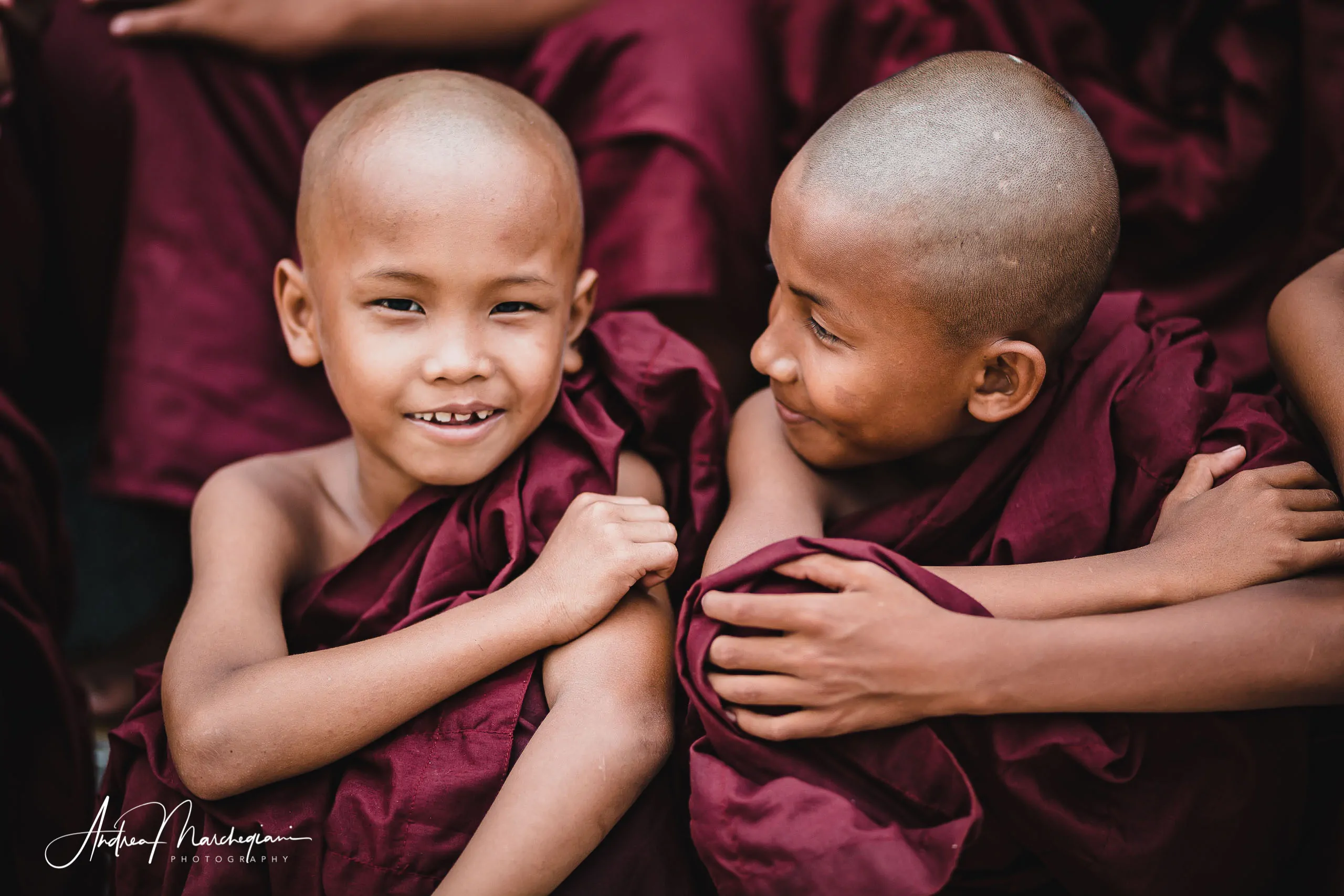
The Burmese custom of gilding stupas
In the 15th century, when the custom of gilding stupas spread, Queen Shinsawbu had it covered with as many kilos of gold as her own weight (40 kg). Thin gold foils are still used in Myanmar to cover pagodas and stupas: on the Golden Rock, for example, the faithful line up to be able to put their gold sheet on the large rock suspended over the ravine.
The wear and the weather require the gold coating to be renewed every year. The gold sheet that covered the Shwedagon Paya in 1995 had reached a weight of 53 tons!
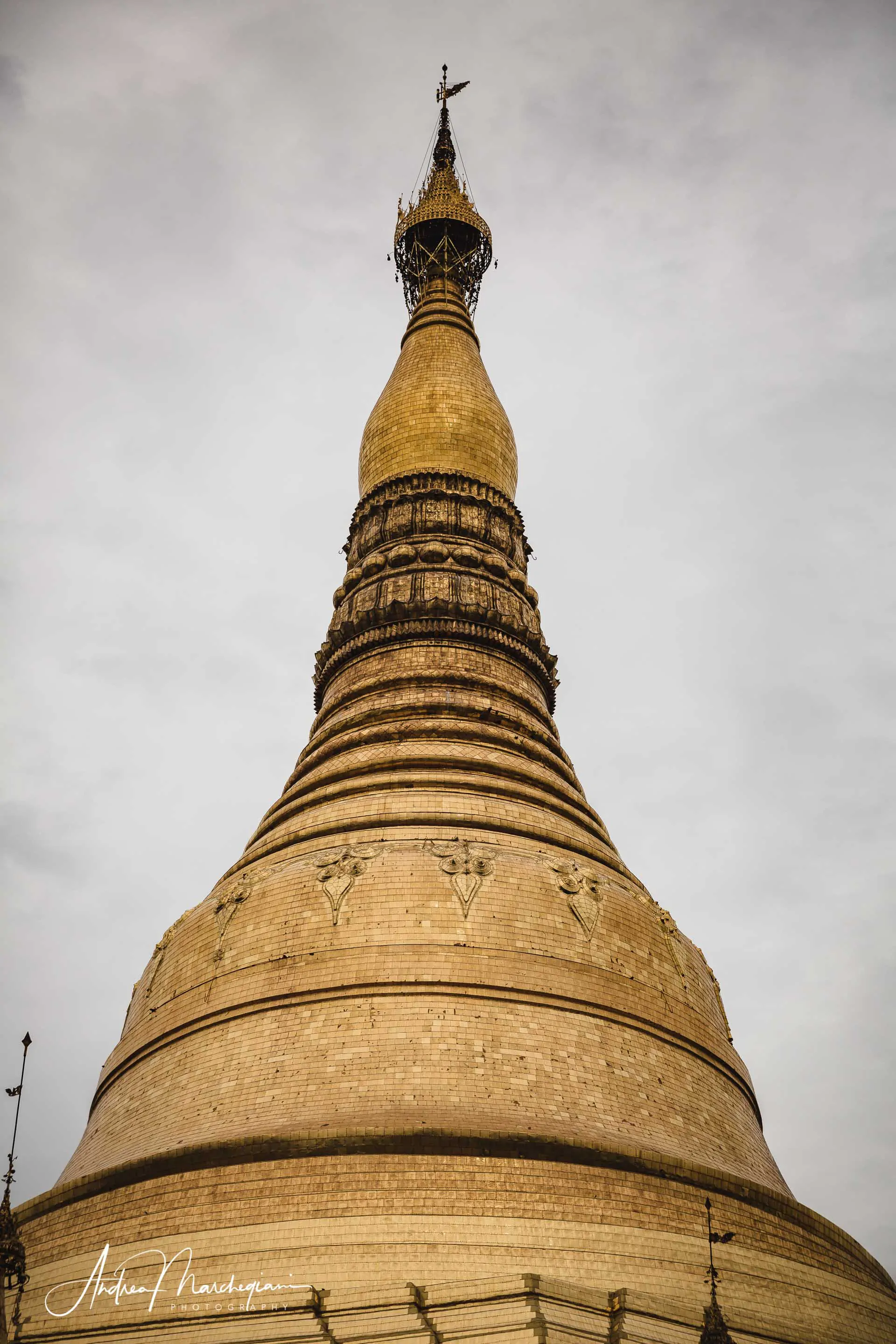
Visiting Schwedagon Paya
If you visit the site on a sunny day, the floor will be so hot they place mats for people to take shelter under. Be careful and use them, as it is really easy to burn your feet. Walk, strictly clockwise, for short stretches and then shelter from the heat for a while. Yet, you will experience this unease in full Burmese style: it will become an opportunity to exchange smiles with strangers. Any hassle is less annoying when shared!
The area occupied by the site is quite extensive, about 5 hectares. The large stupa is surrounded by numerous small temples, statues, tabernacles, all finely decorated; scattered nearby, hundreds of minor buildings and reliquaries. It is impossible for a visitor not well integrated into the local customs to understand their value and meaning.
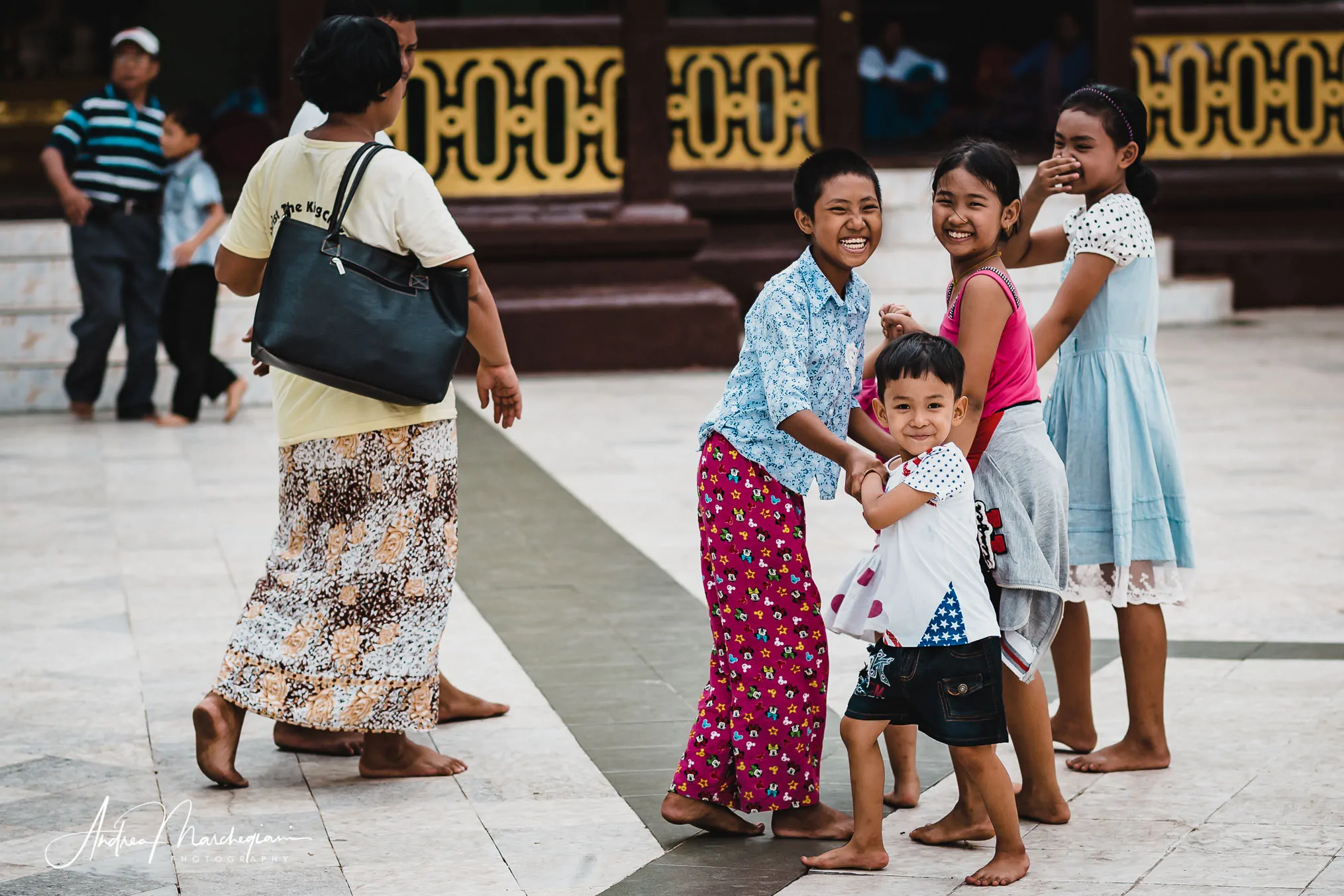
I personally find the most precious aspect of the Shwedagon Paya are the people visiting it, their faces overflowing humanity: monks walking under the colonnades, young women praying kneeling in front of the altars, with sacred books in their lap; Old ladies taking tea together, sitting under the shading mats.
I spent minutes contemplating a young girl absorbed in meditation. How does the mind of a child who is taught kindness develop, what kind of person will they become if they train themselves to empty the mind of the ego’s brooding? The answer is in the smile the Burmese give me every time their gaze meets mine.
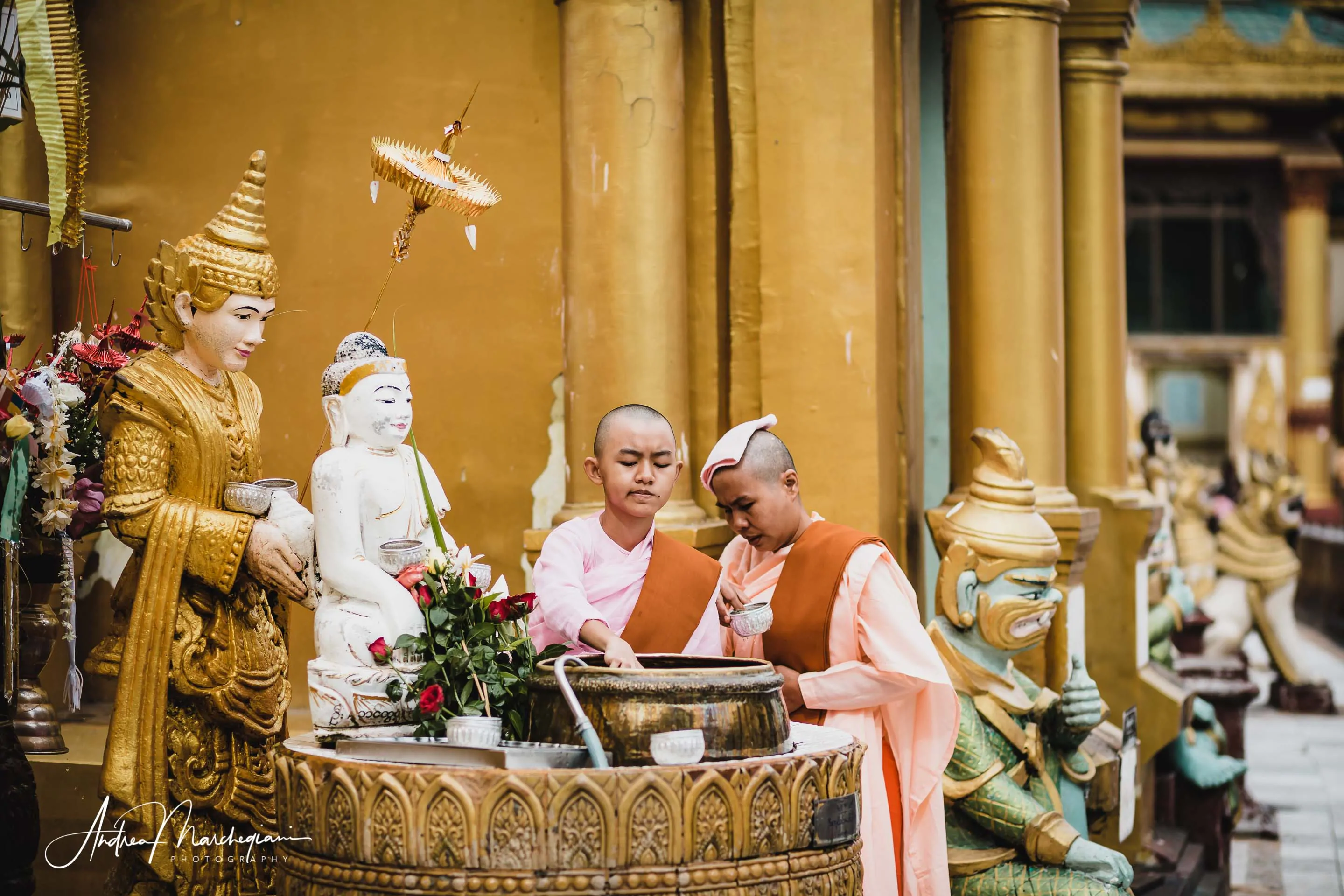
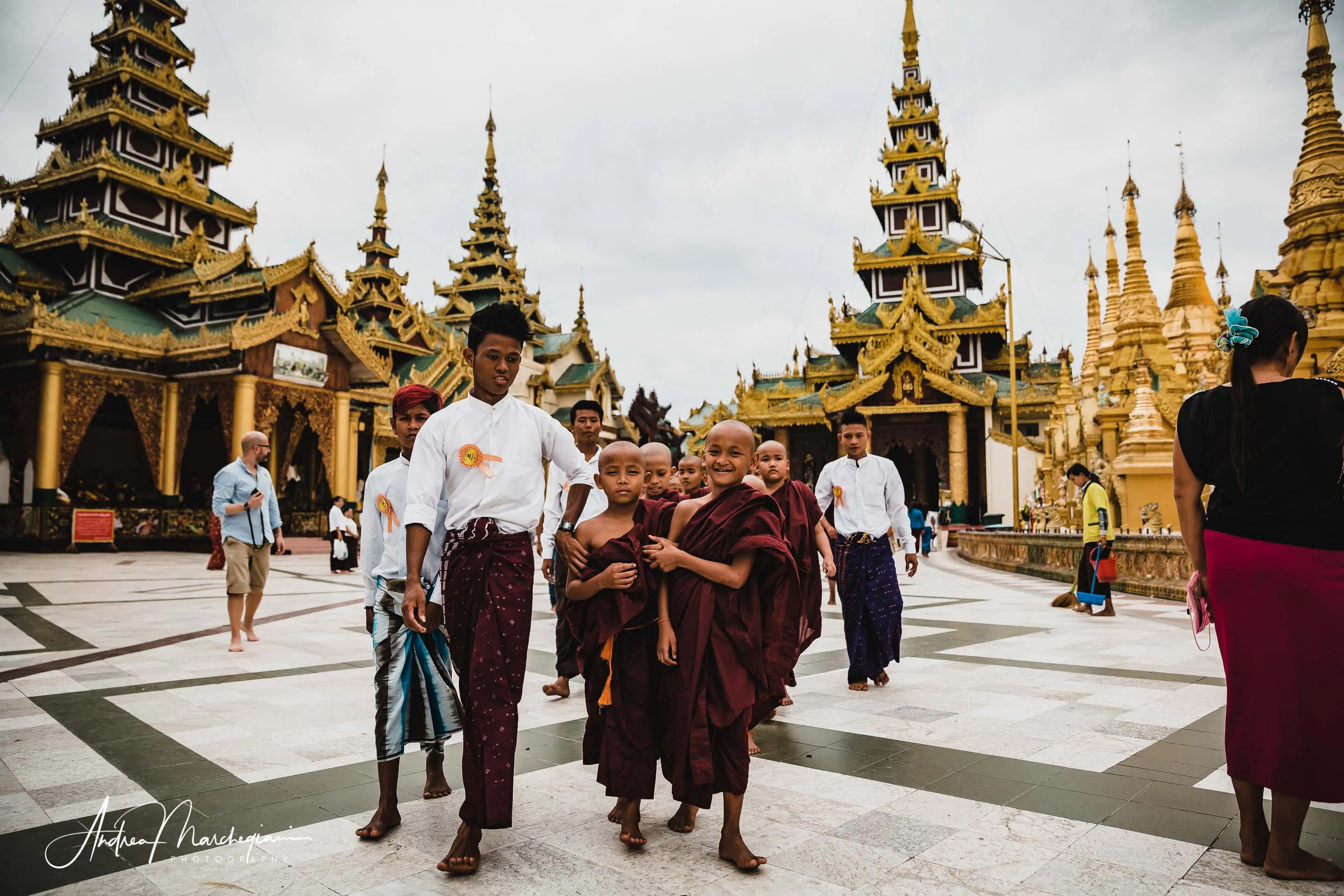

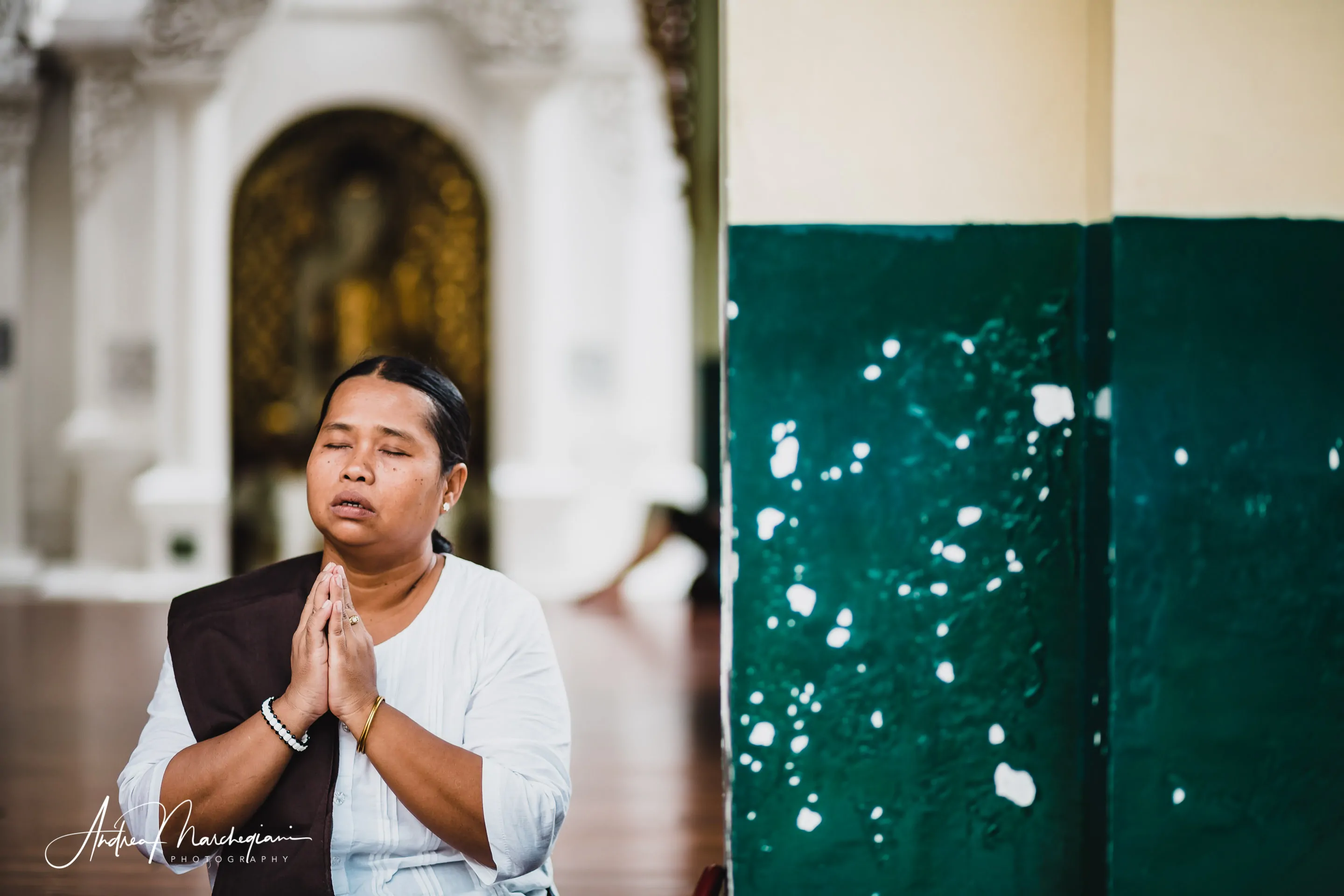
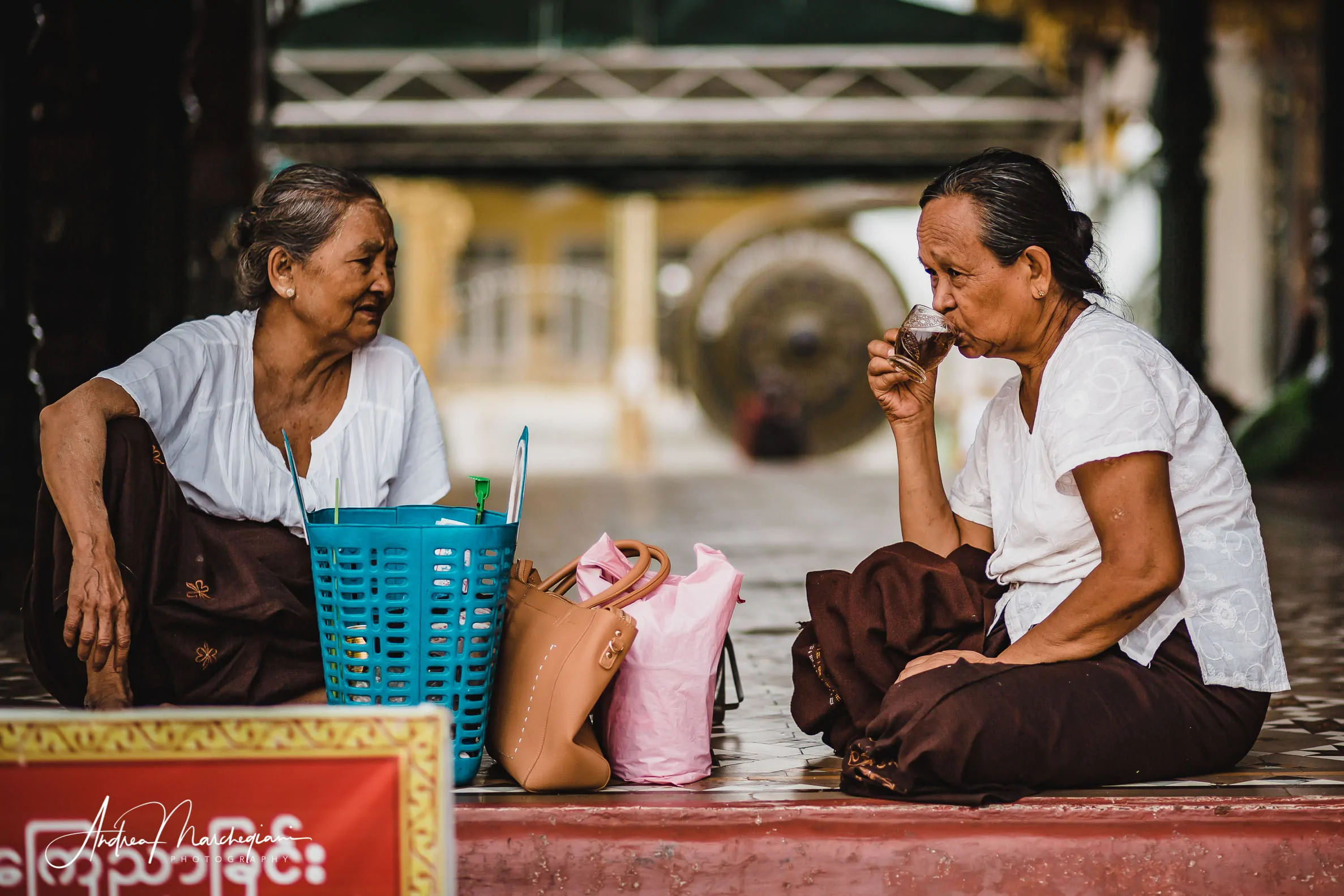
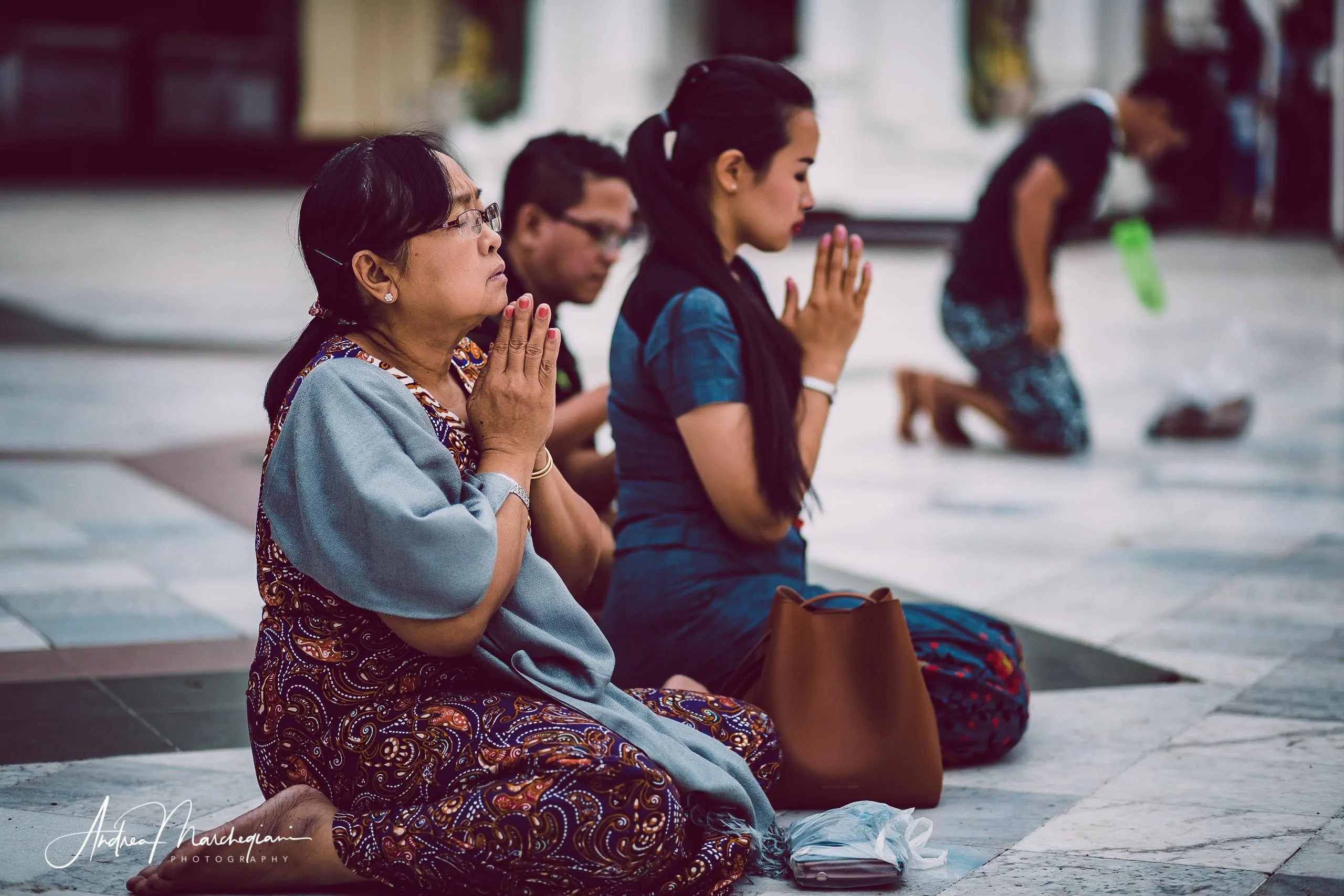
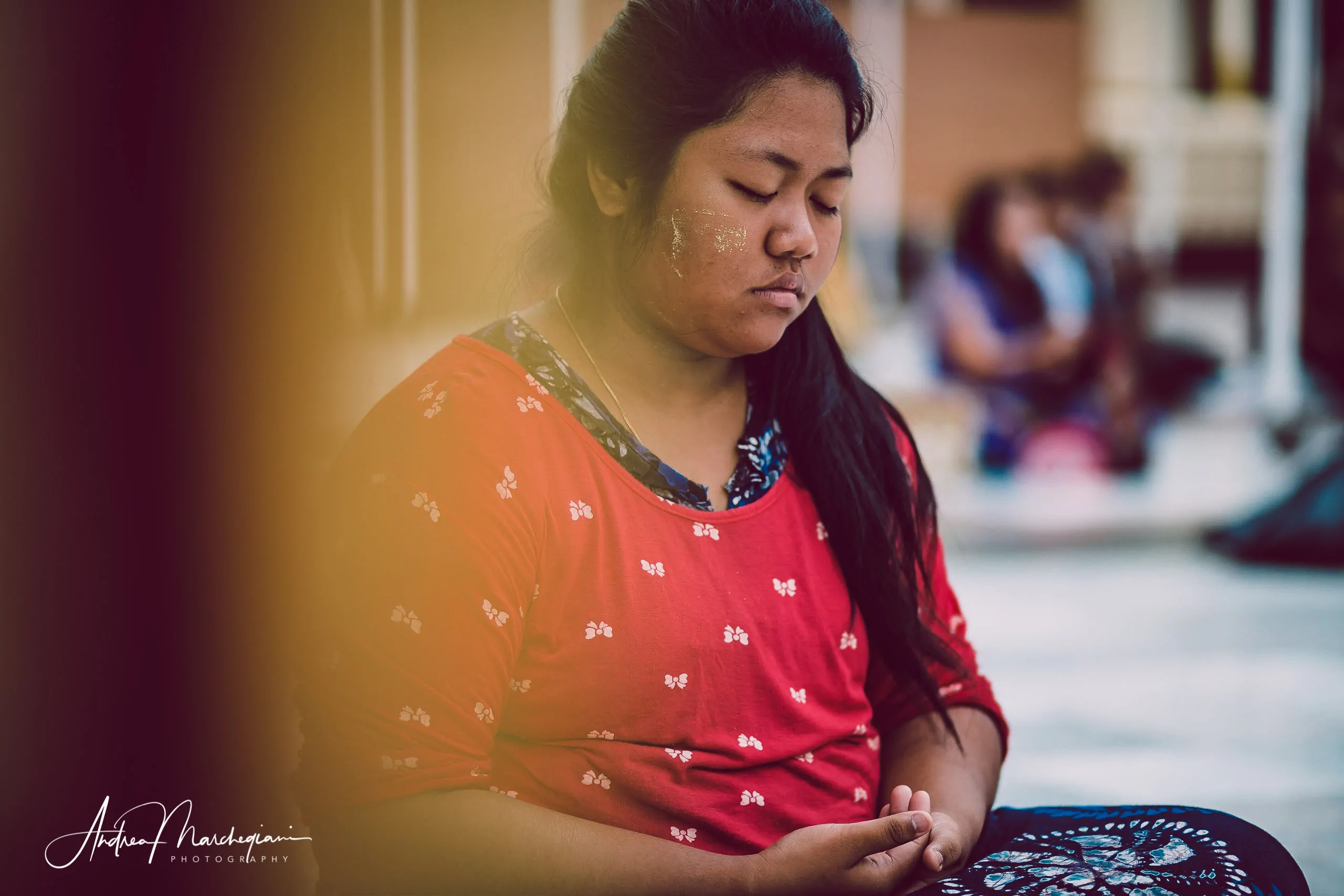
Chauk Htat Gyi reclining Buddha
In the Chauk Htat Gyi Pagoga, there is one very similar to Bago‘s, only slightly “smaller” (so to speak).
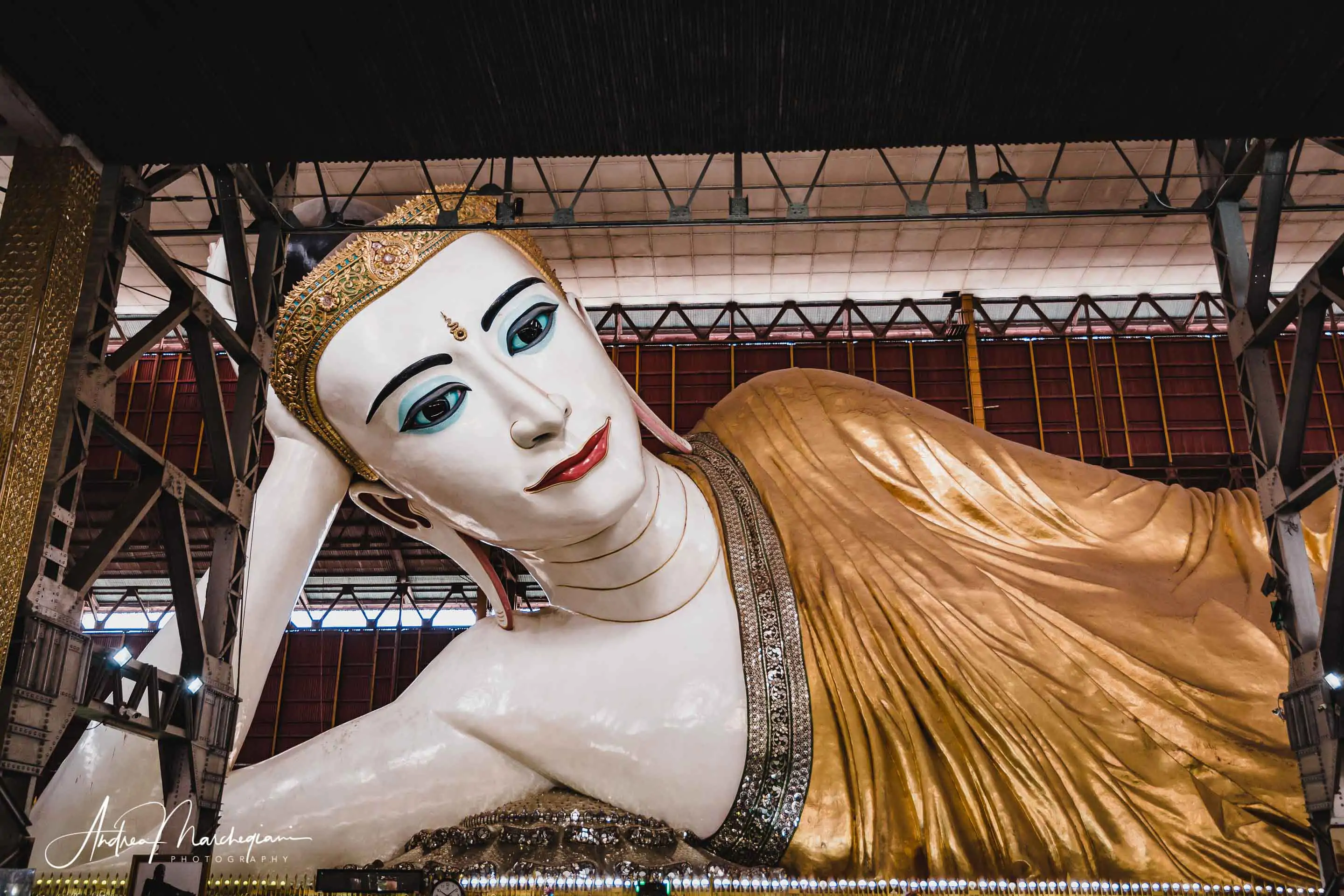
66 meters long and 16 meters high, this statue dates back to 1907: Buddha is depicted dressed in a golden dress, his head studded with precious stones; the soles of the feet are inlaid with symbols representing the 108 physical qualities that distinguish him.
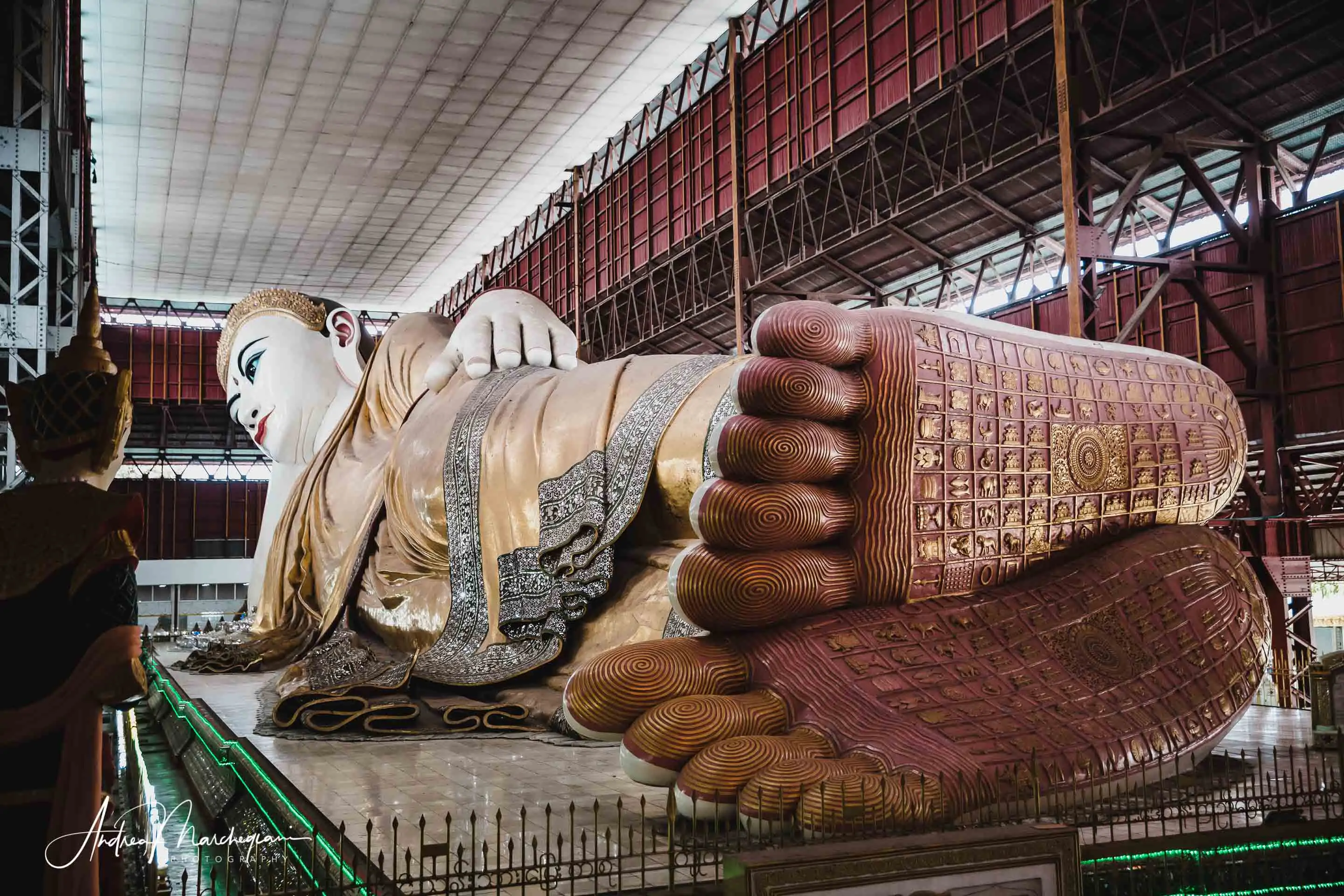
In Asian art, Buddha is depicted in many positions: he can be seated, standing or lying, with his eyes open or closed. His fingers can form various mudras, which express contemplation, courage, resoluteness, generosity – depending on the case . Its representation never communicates sorrow or suffering. In fact, Buddha does not take on the sufferings of man, like Jesus; on the contrary, he frees himself from them and shows others the way to do the same.
The lying Buddha of Chauk Htat Gyi has his eyes open: this position concerns the last phase of his life. When his eyes are open, he is actually asleep; when they are closed, he has already reached nirvana.
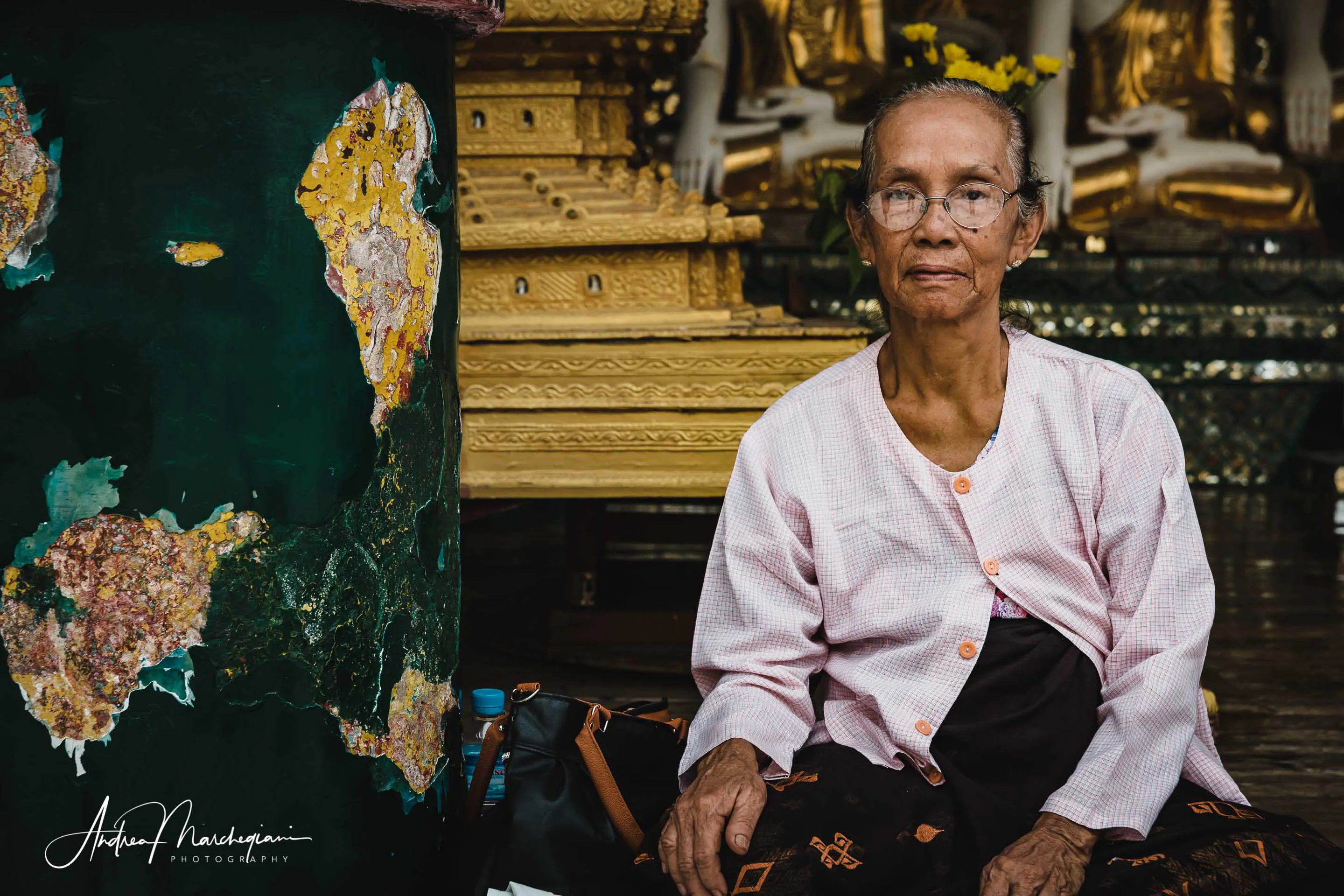
Walking around the statue is an ambivalent experience: on one hand, its remarkable dimensions make me feel small and lead me to reflect on how difficult reaching Buddha’s moral stature must be. There is no shortcut on the path of enlightenment. On the other hand, this physical proximity creates a relationship of intimacy with its historical figure. Gautama Siddhartha was basically just a man and his inner resources are also mine. Walking around his body makes him close to mine.
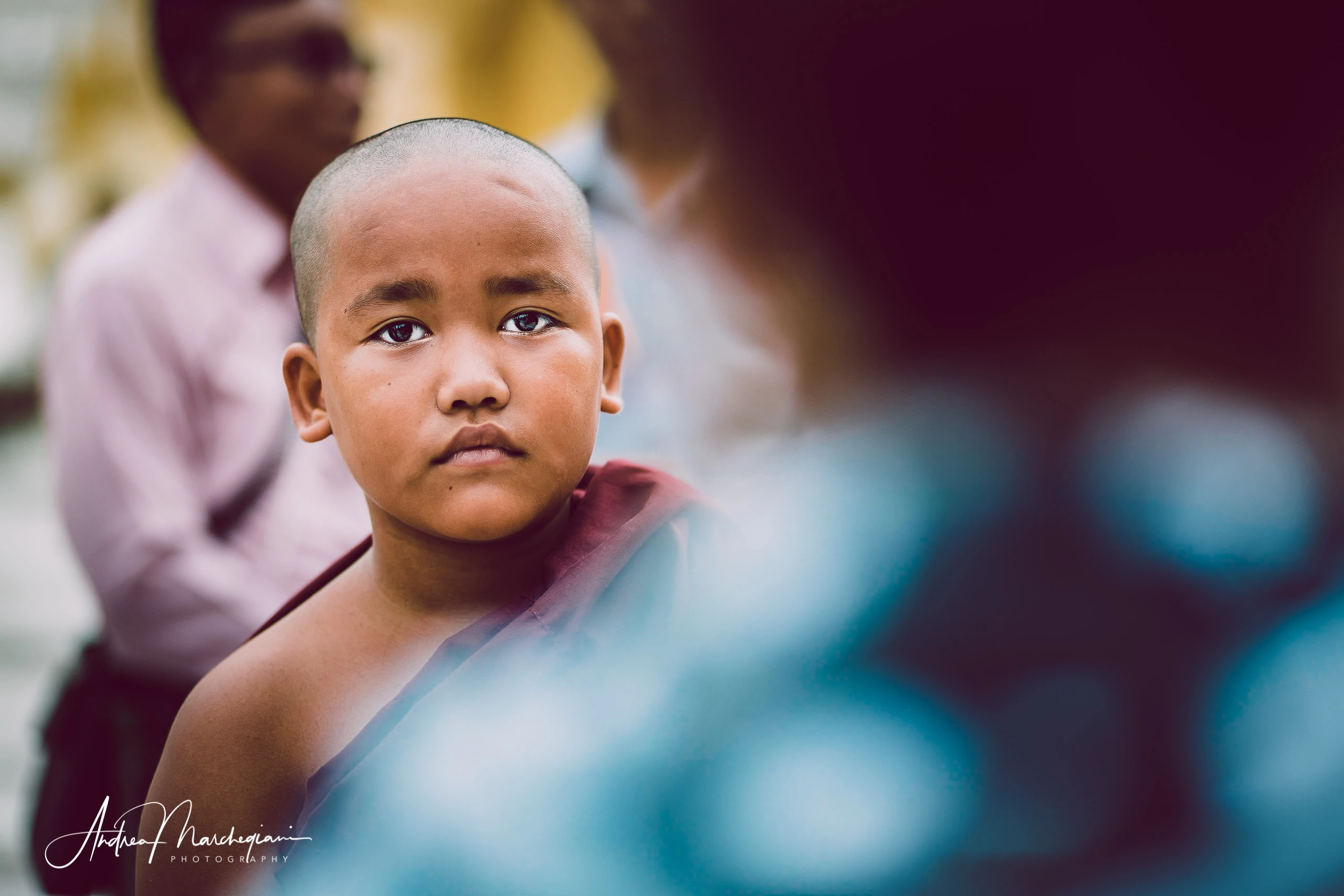
Buddha smile
Many Westerners travel to Asia in search of the peace of mind they cannot find in their homes. Travel confronts us not only with the diversity of other cultures, but also with our unresolved issues; it is inevitable to compare our homeland to the country we visit.
Buddha’s slight smile can convey a paceful feeling: sacred images have a powerful impact on our imagination, no matter if we are believers or not. I can’t help but wonder what kind of impact the image of Jesus Christ suffering on the cross had on me. Of all the wonderful things he has accomplished in life, we have chosen to crystallize his image in the moment of extreme injustice and suffering.
The first time my gaze rested on a crucifix, a nun explained to me that he was the son of God and that he died to free me from my sins. My eyes rested for the first time on an image of heinous torture and I was explained that I too was responsible. Heavy weight on a kindergarten kid, isn’t it? I now know I was given a misguided narrative of the Christian message, but unfortunately it is a mistake often made.
While walking along the immense body of the Buddha of Chauk Htat Gyi I feel gratitude. I thank him for not involving me in the pains of his existence: on the contrary, his eyes are serene, his lips smile at me. They invite me to do the same.
